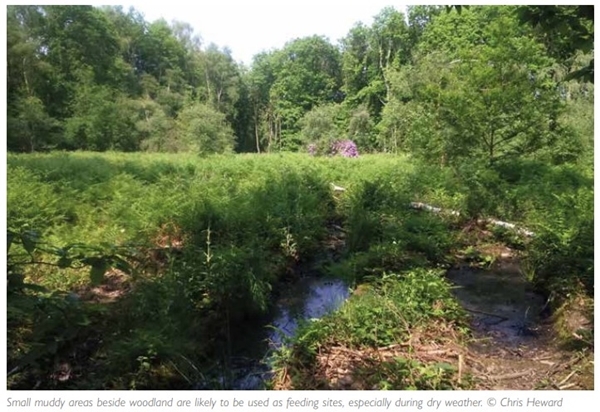
We have recently published Conserving Our Woodcock, a new guide which turns 50 years of GWCT woodcock research into practical guidance on how to provide the varied habitat woodcock require. This blog is taken from the guide, which you can download in full here.
The following management recommendations are made based on our experience of the past fifty years and the body of research we have carried out at the GWCT. This document explores what we now know, what we still do not know and what we continue to work on. The research effort continues, and we need input from those who have breeding woodcock on their land to help support our scientific work.
If you plan to implement the following advice, please get in touch. We are interested to hear how these recommendations are used and to what effect. We would also recommend making simple baseline ‘roding counts’ before management begins, to help measure any subsequent change. We are happy to provide survey instructions and advice, please email: woodcock@gwct.org.uk.
Based on our research and experience, woodcock appear to favour large woods (>30ha) and benefit from woodland diversity. They use clearings and woodland edges for display and feed at twilight; tend to nest predominantly within 100m of woodland edges; and use young, dense woodland for roosting, feeding, and rearing young.
Cessation of woodland management and loss of traditional techniques such as coppicing are likely to have contributed to woodcock declines.
Management techniques that encourage the establishment of young woodland, through clearing and natural regeneration, and that increase stand age structure and shrub diversity are likely to benefit woodcock.
The chances of encouraging breeding woodcock to colonise a new site or recolonise an area where they are locally extinct are slim, given that woodcock only disperse over short distances. These recommendations are therefore likely to be useful at sites where woodcock currently occur and there is a desire to increase numbers or for woodland within about 15km of known breeding woods.

The following measures are likely to increase the suitability of woodland for breeding woodcock:
- Create, reinstate, or widen woodland rides to provide breaks in the tree canopy. Ideally, rides should be at least 8m wide.
- Mow rides and clearings to produce accessible grassy feeding and display sites where bracken does not dominate. Mow the central, grassy portion of rides annually in late summer-autumn. Cut back encroaching bramble or other shrubby growth at ride edges every 3-5 years.
- Create clearings by felling small areas of trees, e.g., where rides intersect. Keep some of these areas permanently clear of trees and allow some to naturally regenerate.
- Allow patches of natural regeneration by early successional trees such as birch and willow at woodland edges or within parts of large clearings.
- Coppice species such as hazel or sweet chestnut. Coppice coupes often need fencing from deer to aid regrowth.
- Create and reinstate clearings and young woodland using a little-but-often policy. Over time this creates a mosaic of woodland types and ages. If habitat creation is too large or synchronous, young woodland will mature simultaneously and become unsuitable at the same time.
- Plant new woodland in places where it can expand existing woods or be used to ‘connect’ fragmented woodland blocks. Deciduous woodland, except for beech, is preferred by woodcock.
- Periodically remove marginal vegetation along sections of ditch or pond edge where these features occur within or close to woodland. Create wet features that retain moisture into late summer.
Managing habitat on a small patch scale every few years can be uneconomical in terms of
hiring equipment or a contractor. Working with neighbours over a larger scale may be necessary to reduce costs.
There are still gaps in our knowledge of how to create optimum woodcock habitat, mostly related to the scale of management required to secure a viable local population of breeding birds. For large woods (>100ha), our current thinking is that stands of at least three age classes are desirable and rides and clearings should comprise 10-20% of the woodland area.
Because it nests on the ground, the woodcock’s eggs and chicks are vulnerable to predators. Predator management specifically for woodcock is unrealistic, but there may be a benefit from fox control carried out as part of a game or wildlife management programme and the impact of this also requires further study.